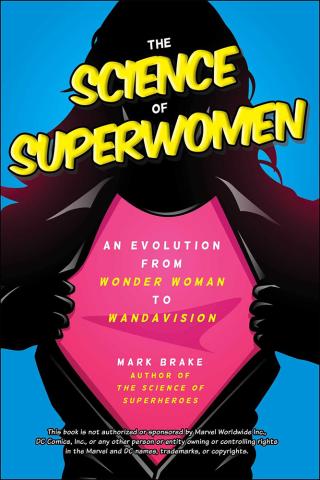| Finns i lager? | ||
|---|---|---|
| Webblager | ||
| Stockholm | Ingår inte i butikens sortiment | |
| Göteborg | Ingår inte i butikens sortiment | |
| Malmö | Ingår inte i butikens sortiment | |
| Linköping | Ingår inte i butikens sortiment | |
Celebrate the rise of superwomen and discover the science behind the abilities of Wonder Woman, Scarlet Witch, Black Widow, Catwoman, and more!
Superhero fiction has been with us for almost a century; high-octane tales crammed with concepts and contrasting themes, from superpowers and the post-human, to masked vigilantes and immortality. In that time, superwomen have evolved from comic book caricatures (created by men, for men) to stronger representations of female power.
The Science of Superwomen looks at this evolution, from its hypersexualized origins to today’s more nuanced diversity. Focusing on characters from Star Wars and X-Men, as well as the likes of Wonder Woman, Batgirl, Captain Marvel, Harley Quinn, Wednesday Addams, Doctor Who, and Buffy the Vampire Slayer, The Science of Superwomen explores the relationship between superhero film and fiction and the underlying science of our ever-evolving universe.
Mark Brake developed the world’s first science and science fiction degree in 1999 and launched the world’s first astrobiology degree in 2005. He’s communicated science through film, television, print, and radio on five continents, including for NASA, Seattle’s Science Fiction Museum, the BBC, the Royal Institution, and Sky Cinema. Mark also tours Europe with Science of Doctor Who, Science of Star Wars, and Science of Superheroes road shows.
Superhero fiction has been with us for almost a century; high-octane tales crammed with concepts and contrasting themes, from superpowers and the post-human, to masked vigilantes and immortality. In that time, superwomen have evolved from comic book caricatures (created by men, for men) to stronger representations of female power.
The Science of Superwomen looks at this evolution, from its hypersexualized origins to today’s more nuanced diversity. Focusing on characters from Star Wars and X-Men, as well as the likes of Wonder Woman, Batgirl, Captain Marvel, Harley Quinn, Wednesday Addams, Doctor Who, and Buffy the Vampire Slayer, The Science of Superwomen explores the relationship between superhero film and fiction and the underlying science of our ever-evolving universe.
Mark Brake developed the world’s first science and science fiction degree in 1999 and launched the world’s first astrobiology degree in 2005. He’s communicated science through film, television, print, and radio on five continents, including for NASA, Seattle’s Science Fiction Museum, the BBC, the Royal Institution, and Sky Cinema. Mark also tours Europe with Science of Doctor Who, Science of Star Wars, and Science of Superheroes road shows.
